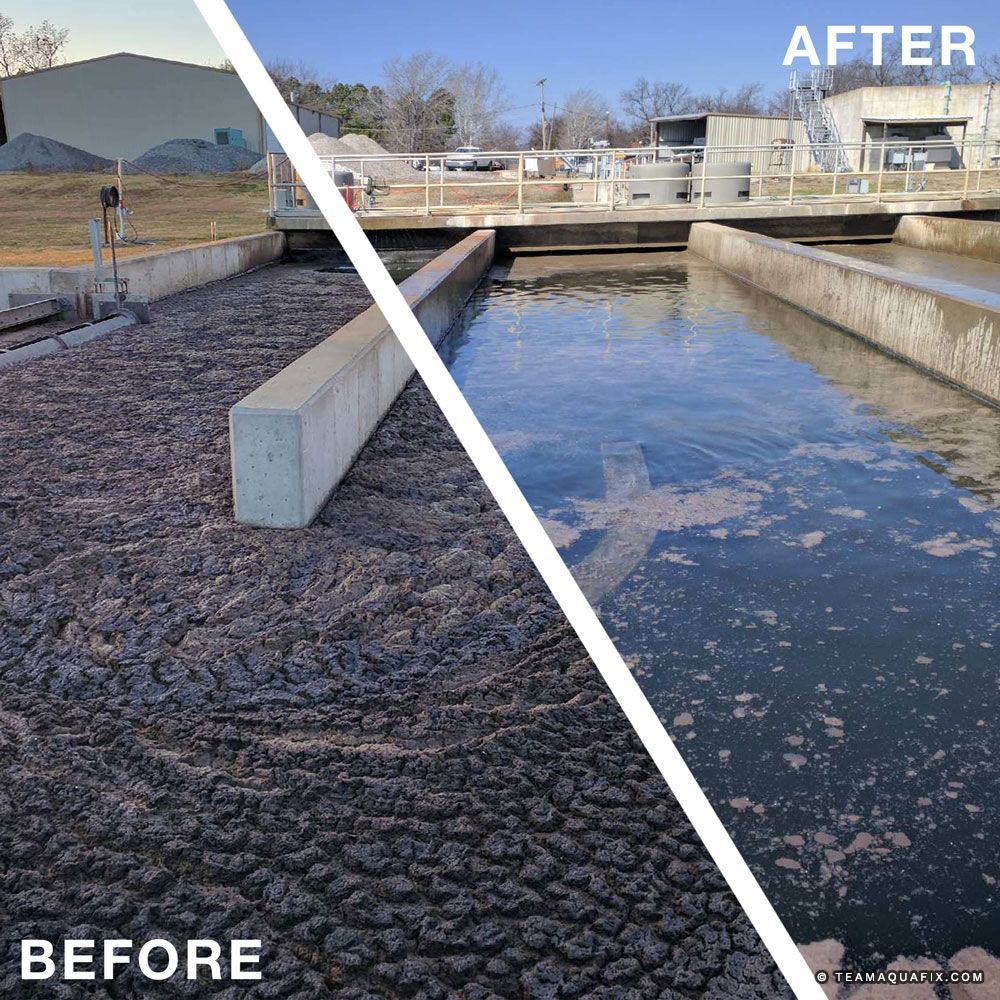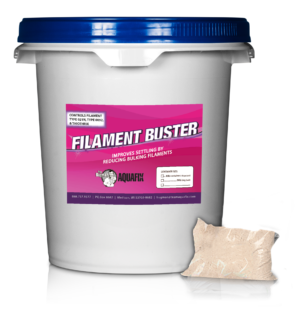A municipal customer came to us describing a foam that sounded like a foaming filament: either Microthrix or Nocardia. The foam was dense, stable, and brown. We started with a basic microanalysis performed in our lab to determine which foaming filament was responsible. The results surprised us as the most prevalent filament was Type 021N/Thiothrix.
In this case it appeared that the high levels of Type 021N/Thiothrix were causing foam through two different mechanisms. First, it was disrupting the ability of the bacteria to form floc. This meant high amounts of solids, which caused foam when at the surface and agitated. Second, the floc that was forming trapped air and rose to the surface, causing additional foaming.

To combat low nitrogen conditions that cause this filament, our treatment started with an organic nitrogen supplement, Filament Buster. The customer increased wasting to physically remove foaming filaments. Over the course of 1 month the floc forming bacteria were able to replace Type 021N/Thiothrix, and foaming subsided.
Filament Buster
Filament Buster reduces the levels of bulking filaments Type 021N, Thiothrix and Type 0092. It is a specific source of amino acids and micronutrients. Typically, these filaments cause bulking in wastewater systems with nitrogen deficiency and lead to dewatering issues. They can be present on an ongoing basis, during times of seasonal temperature changes, or as a result of getting dumped on by upstream sources.
This product is specifically designed to combat filaments caused by nitrogen deficiency. Use SmartBOD in systems with low F:M and high sludge age conditions.
Want Aquafix to take a look at your unique application? Contact us!
Call: 888-757-9577 Email: technicalservice@teamaquafix.com

